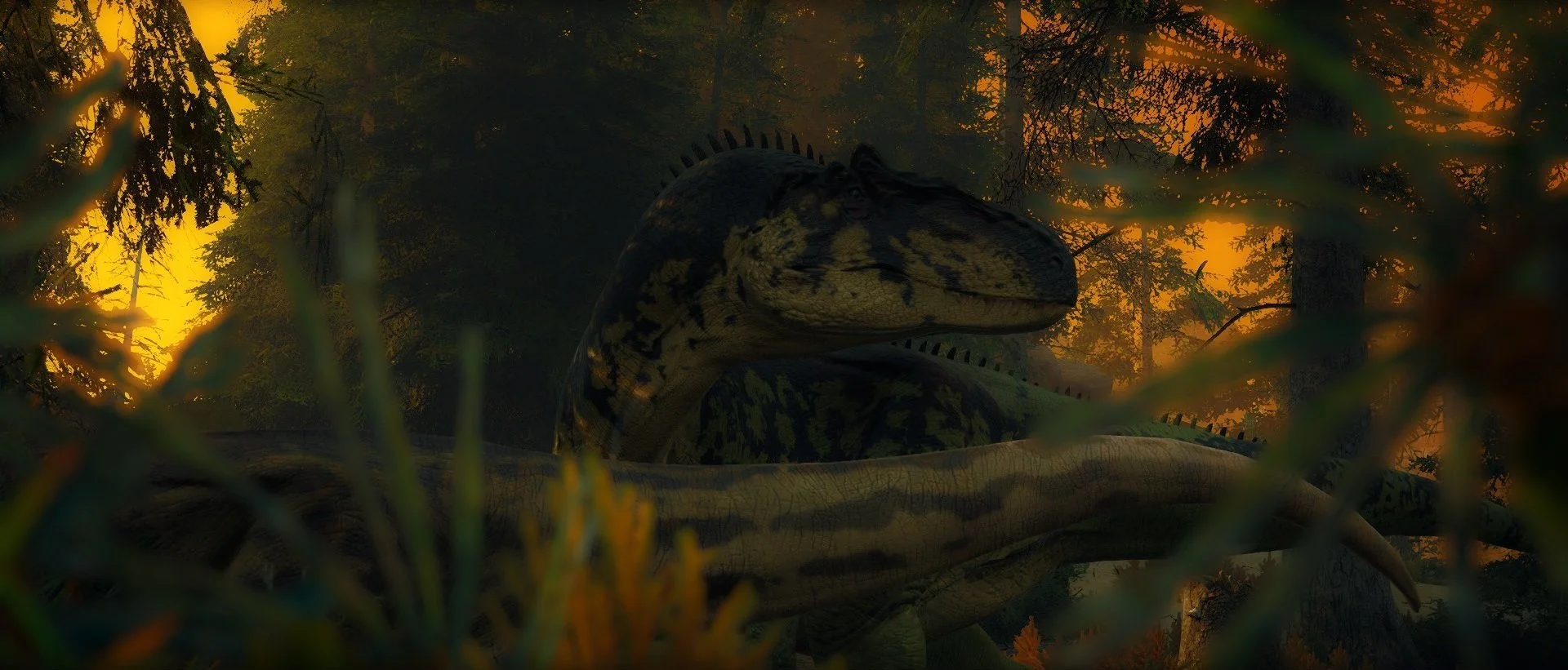Eurhinosaurus
Tier: 3
Type: Aquatic carnivore
Passive growth time: 2 hrs 31 min
Pod size: 6 sub adults/adults, 1-6 juveniles/adolescents
Hierarchy: Matriarchal
Mating bond: Monogamous
Nest size: 1-2 offspring per pair
Diet tags: Piscivore, carnivore, non-cannibalistic & scavenger
Preferred food: Fish, Tier 1-4 herbivores & carnivores
Species specific rules: Can only steal in a group with 3 or less adults/sub-adults. If they have at least 4 adults/sub-adults, they can also hunt Tier 5-6 herbivores & carnivores.Behaviors in nature
Eurhinosaurus are highly curious creatures that exhibit a great interest in exploring their natural environment, which primarily consists of coastal reefs and seaweed forests. When it comes to hunting, Eurhinosaurus engage in a unique hunting method, utilizing its long beak-like snout to immobilize their prey and deliver a series of bites, preventing any chance of escape. These Ichthyosaurus display a relatively non-territorial nature, allowing other marine life to approach them closely. This behavior appears to involve a decision-making process, where they determine if the approaching animal is a potential prey or not. Despite their relatively small size, Eurhinosaurus remain calm and are more inclined to defend themselves than retreat.
Social behavior
Eurhinosaurus pods form strong bonds among members, usually consisting of an exclusively female family unit with a limited number of males. The oldest female within the group, usually without a mate, will guide the pod to the most successful hunting locations she has encountered. Eurhinosaurus displays great gentleness towards each other, and even extend this behavior to individuals outside of their pod. In the event of a pod mate's death, the remaining members will go through a period of mourning, lasting several days. During this time the pod will show signs of depression, such as reduced activity levels and a decreased interest in hunting.
Recommended behaviors
╸Eurhinosaurus enjoy basking in the sunlight near the water's surface.
╸Prefer to traverse on the seafloor to avoid the gaze of larger sea life.
Courtship
During the mating season, Eurhinosaurus' pods will migrate east towards large seagrass forests. Mature males will separate from their pod and actively seek out a suitable mate of their own from the numerous pods that gather for the season. Meanwhile, the unmated females emit vocalizations to attract as many potential mates as possible. The males engage in displays of strength and agility, including lunging out of the water, in order to compete with each other for the attention of the females. The female will choose her preferred male based on the highest jump achieved. Once the pair has mated, they will remain together until one of them passes away. Males of Eurhinosaurus fortunate enough to find a mate will join their mate’s pod, assuming the lowest rank in the feeding hierarchy. The female will protect him from other members of the pod until he can establish a higher position within the social structure.
Nesting & offspring
Eurhinosaurus nesting is a shared effort, as all females in the pod give birth within days of each other. The entire pod works together to construct a nest made of shells and lake sponge, typically located at the base of large seaweeds or within sea-caves. This nest serves as a communal space for all the offspring. Once the babies are born, Eurhinosaurus mothers become highly protective, preventing any other species from approaching the nest. Hatchling Eurhinosaurus exhibit a strong attachment to their mothers, rarely venturing more than a few feet away from them. Since they rely on their mothers for all their needs, it is not until reaching adolescence that baby Eurhionosaurus gradually overcomes their skittish behavior.




